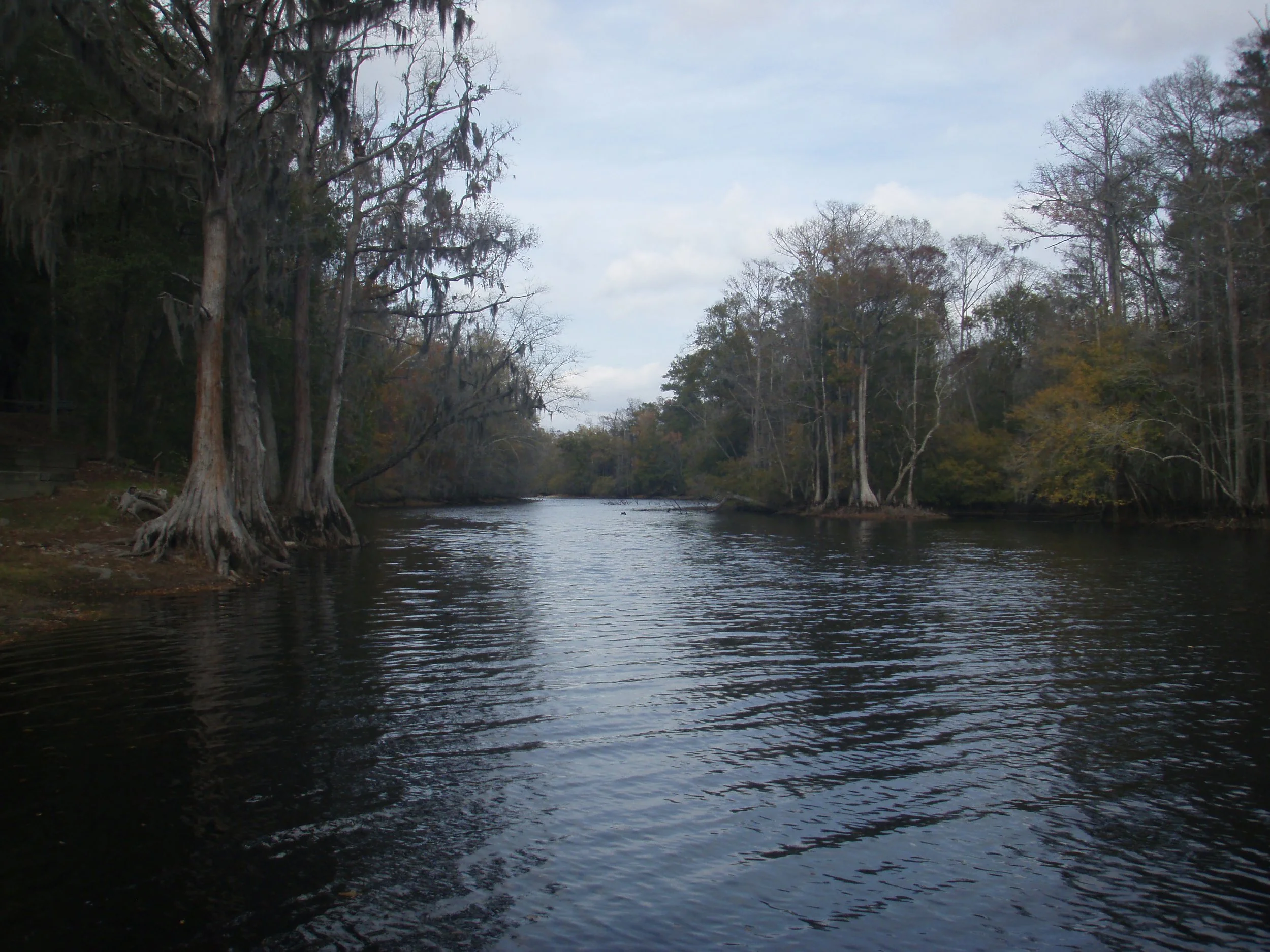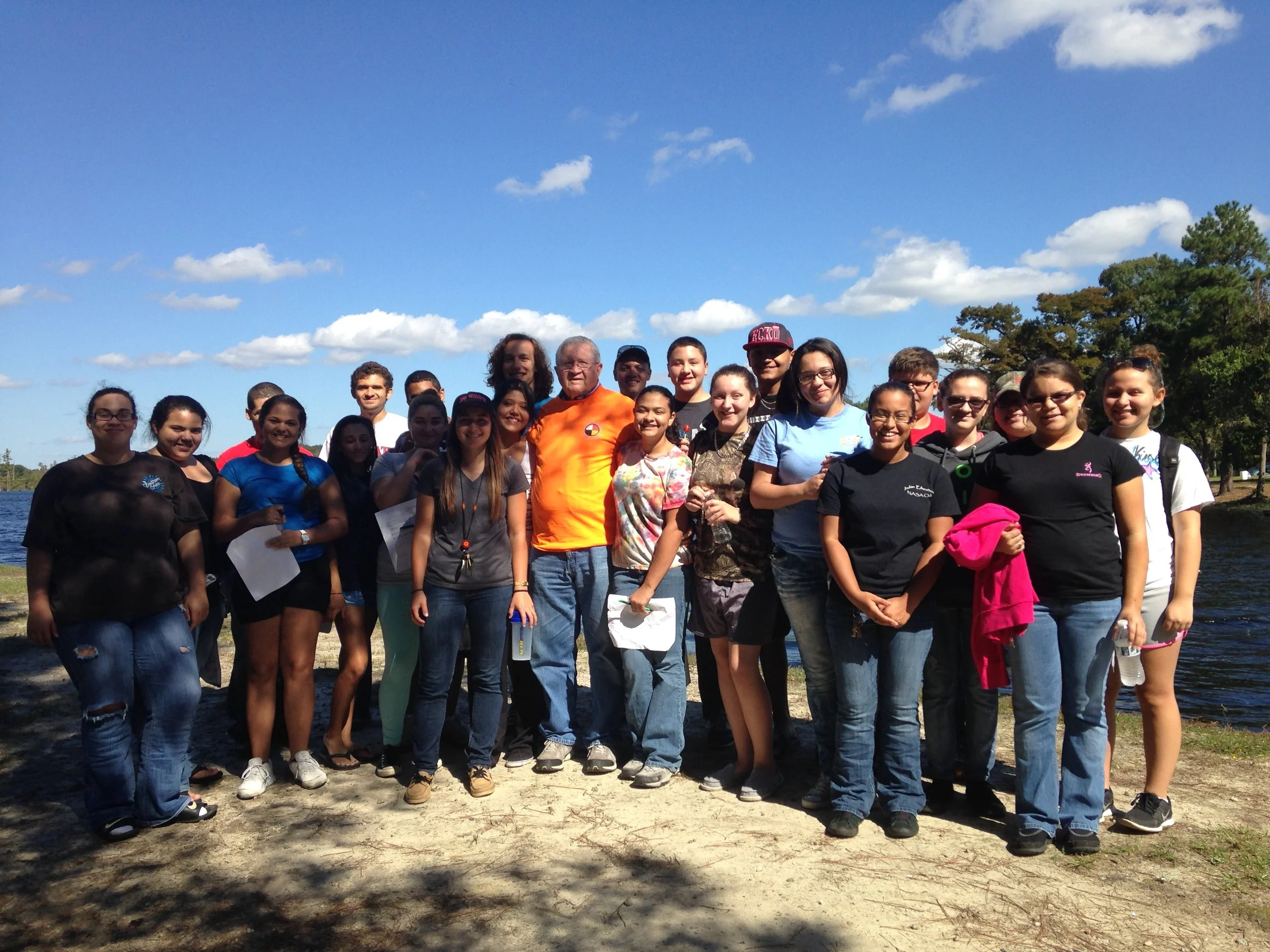Water in the Lumbee World
Lumbee people still occupy parts of their ancestral homelands in the Coastal Plain of what is now eastern North Carolina. Like Indigenous peoples around the world, Lumbees have strong cultural and historical ties that bind them to their ancestral lands and waters. Lumbee homelands are situated near their namesake river, a blackwater stream that meanders through the Coastal Plain, eventually merging with other rivers on their way to the Atlantic Ocean. The Lumbee River is flanked by dense, forested wetlands, and it is fed by dark water from dozens of tributary swamps. Along the river and amid these swamps, Lumbee people and their ancestors have thrives since time immemorial.
Lumbee River in Robeson County, NC, 2011.
An enrolled citizen of the Lumbee Tribe, Ryan is interested in cultural connections between people and water. Much of his work centers Lumbee perspectives on water, land, and home - but he has also worked with other tribes in the region, including the Coharie, Waccamaw Siouan, and Haliwa-Saponi. Together with collaborators, external partners, and members of his research group, Ryan researches and writes about ways that climate change, pollution, and unsustainable development affect the Coastal Plain and the people who live there. Ryan also studies and writes about the long histories of colonialism, racism, and extraction that affect Lumbee people and their Indigenous neighbors. He also thinks and writes about the ways that public policies limit the ability of Indigenous peoples to exert sovereignty and to help guide the futures of their homelands.
Environmental education day for high school students at the Lumbee Cultural Center, 2014.
Ryan is interested in scientific research and public engagement that promotes justice for Lumbee people and others who are marginalized, excluded from decision-making, and forced to shoulder burdens connected to legacies of colonialism and racism. His group’s work in this area does not always fall neatly into colonial scientific disciplines such as hydrology or ecology. Projects may combine environmental modeling and geospatial analysis with field sampling, laboratory work, policy analysis, studies of historical archives, or scholarly critiques of extractive institutions and industries. Regardless of the methods, Ryan and his group are interested in building and maintaining relationships with people that are based on respect for water as a sustainer of life, a source of culture, and a powerful agent of change.
Jocelyn Painter and Ryan collect samples from the Great Coharie River after Hurricane Florence, 2018.
Writing alone and with others, Ryan’s work on the cultural connections between people and water has appeared in technical scientific journals and in journals that focus on the humanities, such as Environmental History and Southern Cultures. This body of work is summarized in Ryan’s book, On the Swamp: Fighting for Indigenous Environmental Justice.


